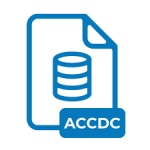.ORA File Extension

Oracle Database Configuration File
| Developer | Oracle |
| Popularity | |
| Category | Database Files |
| Format | .ORA |
| Cross Platform | Update Soon |
What is an ORA file?
Oracle Database configuration files, denoted by the .ORA file extension, are pivotal components in configuring and customizing an Oracle database instance.
These files contain parameters and settings essential for the proper functioning and performance optimization of the Oracle database.
More Information.
The .ORA file format dates back to the early versions of Oracle Database. Initially, these files served as simple text-based configuration files, housing parameters such as database name, listener information, memory allocation settings, and network configurations.
Over time, as Oracle Database grew in complexity and functionality, the .ORA files evolved to accommodate a broader range of parameters, enabling administrators to fine-tune various aspects of database operation.
Origin Of This File.
The .ORA file extension has been integral to Oracle Database since its inception. Oracle Corporation, founded in 1977, developed these files as part of its flagship product, Oracle Database, which has evolved over decades to become one of the most widely used relational database management systems globally.
File Structure Technical Specification.
.ORA files adhere to a straightforward structure, typically consisting of key-value pairs, where each parameter is specified with its corresponding value. The parameters within these files govern different aspects of database configuration, including:
- Database Identification: Parameters such as
DB_NAMEandDB_UNIQUE_NAMEidentify the database instance. - Memory Configuration: Settings like
SGA_TARGETandPGA_AGGREGATE_TARGETdictate memory allocation for the System Global Area (SGA) and Program Global Area (PGA). - Listener Configuration: Parameters such as
LISTENERandSID_LISTdefine listener endpoints and service identifiers. - Networking: Configuration details for networking components like
HOSTNAMEandPORTare specified. - File Locations: Paths for database files, control files, redo logs, and archive logs are defined.
- Security: Parameters related to security, such as
REMOTE_LOGIN_PASSWORDFILE, control authentication mechanisms. - Backup and Recovery: Settings for backup retention, recovery options, and archive log management are configured.
The technical specifications of .ORA files may vary slightly depending on the Oracle Database version and edition but generally adhere to this key-value structure.
How to Convert the File?
Converting .ORA files typically involve migrating configuration settings from one format to another, often necessitated by changes in database platforms or deployment environments. While there are no direct conversion tools for .ORA files, the process generally entails:
- Identifying Parameters: Understand the purpose and functionality of each parameter within the
.ORAfile. - Mapping to Target Format: Determine the equivalent settings in the target database platform or configuration format.
- Manual Editing or Scripting: Modify the configuration settings either manually or using scripting tools to generate the appropriate format for the target environment.
- Testing and Validation: Thoroughly test the converted configuration to ensure compatibility and functionality.
Advantages And Disadvantages.
Advantages:
- Customization: Administrators have granular control over database configuration, allowing optimization for specific workload requirements.
- Portability:
.ORAfiles can be easily copied or transferred between different Oracle Database installations, simplifying deployment and configuration processes. - Transparency: Being text-based,
.ORAfiles are human-readable, facilitating easy inspection and troubleshooting.
Disadvantages:
- Complexity: Managing a plethora of configuration parameters across multiple
.ORAfiles can become intricate, especially in large-scale database environments. - Error-Prone: Manual editing of
.ORAfiles increases the risk of configuration errors, potentially leading to performance issues or system downtime. - Version Dependency: Compatibility issues may arise when migrating or upgrading Oracle Database instances due to changes in parameter names or deprecated settings.
How to Open ORA?
Open In Windows
- Use Notepad or any text editor of your choice. Right-click on the
.ORAfile, select “Open With,” and choose the preferred text editor.
Open In Linux
- Linux distributions typically come with a variety of text editors, such as Vim, Nano, or Gedit. Open the terminal, navigate to the directory containing the
.ORAfile, and launch the desired text editor.
Open In MAC
- TextEdit, the default text editor on macOS, can be used to open
.ORAfiles. Alternatively, third-party text editors like Sublime Text or Atom are suitable choices.













